From what equipment to use, to which work-to-rest ratios work best, here’s how to do HIIT (high intensity interval training) for maximum benefits.
HIIT is trendy, efficient, and effective, but it can be tricky to maneuver by yourself. But once you get the hang of it, it’s an excellent way to achieve and maintain all-around fitness.
What is high intensity interval training?
High intensity interval training, or HIIT for short, is a workout with time intervals of very intense exercise.
It’s a popular form of exercise with bodybuilders, cross-fitters, and laywomen alike for very good reasons: HIIT burns fat fast, as research and anecdotal evidence shows.
It’s also a fantastic way to get a great workout that saves time and carries loads of benefits. More on that later.
What is the definition of HIIT?
This post may contain affiliate links. Please see my full disclosure here.
If you look up HIIT, you’ll find varying definitions. While they’re all technically correct, only some are effective, and they cater to different types of workouts.
Some places, like WebMD, define HIIT as something with longer recovery intervals than work intervals. For instance, working for 30 seconds and resting for 90 seconds. While this is correct, experience and research show that it’s an ineffective way to work out—unless the recovery period is active rest and not complete rest.
For an accurate definition, I like the one that ACSM uses: “repeated bouts of high intensity effort followed by varied recovery times.” There are different types of HIIT, but they all have one thing in common: During the high intensity intervals, you should be going at maximum effort for the entire interval while still keeping good form.
HIIT workouts vary widely, however, and these variations are generally in the following ways:
- Type exercise involved
- Length of recovery
- Type of recovery
This boils down to two different types of HIIT, with a distinct difference in the first factor: type and variation of exercises.
The two basic types of HIIT.
Both forms of HIIT use it for different reasons and from different starting points. One uses it to amp up steady-state cardiovascular exercise by introducing higher intensity intervals of the same (or similar) exercise. The other is using it to structure various exercises, perhaps with varying purposes (strength building or cardiovascular). This kind of workout is structured with intervals of high intensity and usually shorter rest or recovery.
How to do HIIT for steady-state cardio.

The first type of HIIT is a great tool to use if you’re doing a steady-state type of cardio activity: running, biking, swimming, elliptical, etc.
HIIT training of this type can use the high intensity intervals in a structured or unstructured way, but the point is the same: to increase the intensity for a short duration. When you’re done with the high intensity interval, you return to low or moderate intensity, usually for a longer period.
For instance, if you’re jogging, you jog at a moderate pace for 30 minutes, and every five minutes you do one minute of running or sprinting.
You could also do a 1:1 ratio, running and jogging, though this would be very taxing, and I’d suggest only doing that for short periods of time (under 10 minutes or so).
Usually, when I talk about HIIT, I don’t mean this type, only because I don’t typically do steady-state cardio. If you do, though, it’s a fantastic way to burn extra fat, push your limits, build some muscle, create a nice endorphin high and beat boredom.
How to do HIIT for metabolic strength training.
The second type is the type that many of today’s fitness leaders use in their workouts. It’s usually (though not always) a circuit of different exercises (rather than one like HIIT cardio). This means that there is a set order of various exercises, and you go through them in order before (usually) repeating it a few or several times.
More importantly, the entire workout is a bunch of timed intervals, alternating high intensity with rest or low intensity, with the high intensity intervals accounting for most of the workout. For instance, a common HIIT workout is 15&45×12, or 15 seconds rest, 45 seconds of work for 12 rounds. Since you have 12 rounds, you could do a circuit of four exercises for three rounds, For instance:
- squats
- overhead presses
- burpees
- mason twists
So you do 45 seconds of all-out effort on the squats before resting for just 15 seconds to then jump into the presses for the next 45 seconds, and so on. You then have a 12-minute workout where you’ve been working at a very high intensity for 75% of the workout.
With the above setup, you could also do three exercises for four rounds, two exercises for six rounds, or six exercises for two. You get the idea.
This article will be dealing mostly with this metabolic resistance training HIIT: Why you should do it, how to set it up, what exercises to do, what ratios work best, and how to get the most out of your HIIT workout.
Why you should do HIIT.
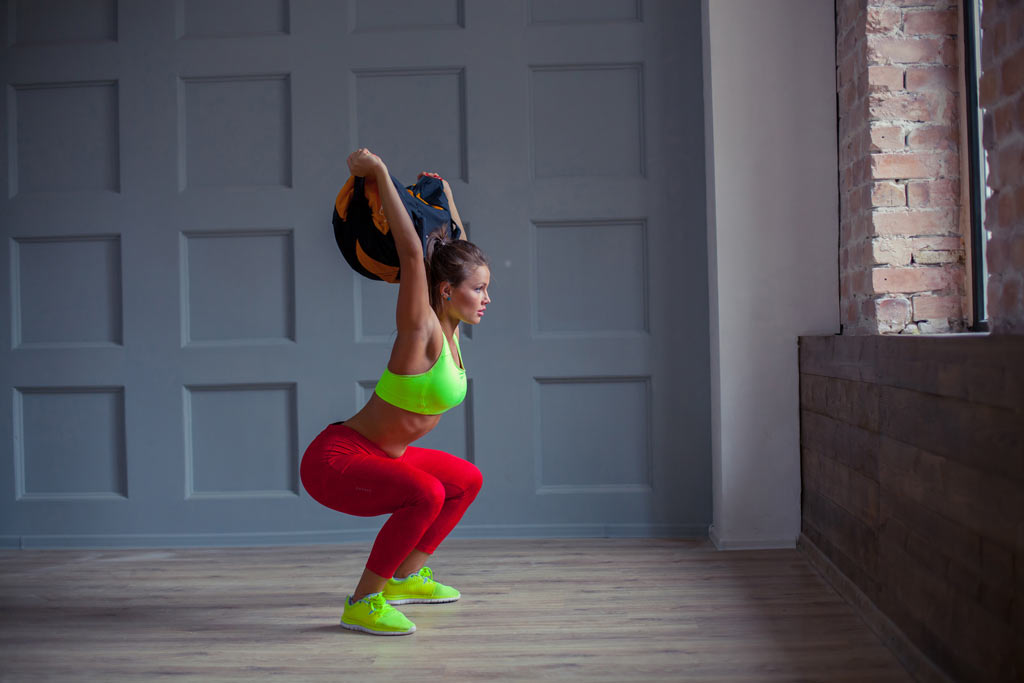
HIIT is amazing for a myriad of reasons, but I’ll skim over the basics here.
Let me ask you this: Why do you want to include fitness in your life? There are lots of great answers to this question. You could want to beat depression, build muscle, tone body parts, live longer, etc. But most likely, you want to lose some fat in the process.
Well, hold on to your hats, because HIIT is the fastest way to lose fat from exercise alone.
That’s my opinion, mind you. I’ve seen pounds melt off with an HIIT workout schedule of only 12 minutes a day and no change to diet. You’ll eviscerate calories both during the workout and for hours afterward. (Granted, to burn fat you should focus on diet, and this fat-burning boost doesn’t last forever. However, it goes to show how effective HIIT is at burning fat.)
Besides that, it saves time, helps you beat diseases like diabetes and osteoporosis, raises your fitness level, and gives you a natural high.
Even if it’s not your preferred way to work out, adding in an HIIT workout or two a week will push your fitness to new limits and help you reach your goals faster.
How to set up your HIIT workout for metabolic strength training.
With metabolic resistance HIIT, the entire workout is framed within intervals. You can do one long workout for 30 minutes, broken up into 15 seconds of rest and 45 seconds of work. However, it is more effective to break it into chunks no longer than 20 minutes. You can then do just one HIIT workout, or string a couple of mini-workouts together for a longer workout with some rest between.
First, we want to think about rest, and how much you should include in the workout, or if you should even include it at all.
Break out your calculator, because it’s ratio time.
HIIT interval ratios: Which is best?
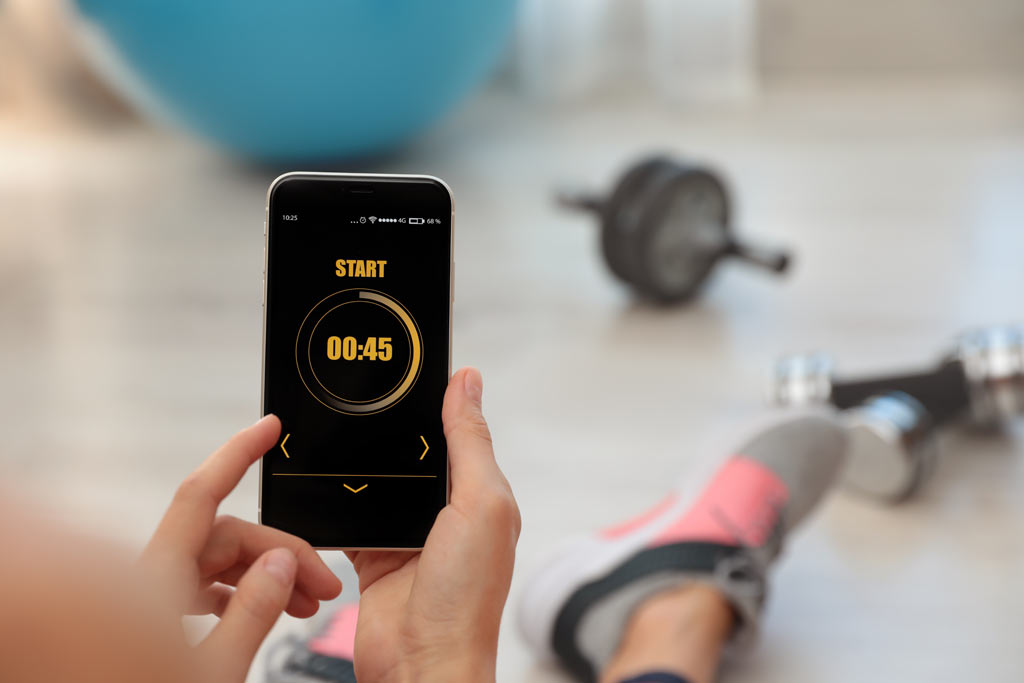
Most HIIT workouts of this type have a consistent ratio of work to rest. If you do burpees for 30 seconds and then rest for 30 seconds, that’s a 1:1 ratio. If you rest for 60 seconds, that’s 1:2. If you rest for 15 seconds, that’s 2:1.
Don’t do an HIIT workout with a ratio of less than 1:1. It’s not effective. If you find high intensity work extremely taxing to the point where you need more rest, then you’re probably not ready for it—yet. I’d recommend some steady-state cardio first. Start with walking, speed-walking, or exercising on a cardio machine, then move something with a higher intensity from there. You could also start learning basic weightlifting without being timed. Keep your focus on form and progression with correct progressive overload.
HIIT interval ratios by fitness level.
In general, the more advanced you are, the higher work to rest ratio you can handle. However, the ratio you choose also depends on the exercises you’re performing, the weights you’re using (if any), and any external factors. Use this only as a guideline.
Most people can start with a ratio of 2:1 ratio. The Tabata protocol follows this ratio (10 seconds of rest and 20 seconds of work), as does the Spartacus 2.0 workout (40 seconds of work followed by 20 seconds of rest).
If you’re a beginner, be sure that the exercises you’re doing are within your fitness level. And if 2:1 seems too tough, try 1:1 or some steady-state cardio HIIT like mentioned above.
For the intermediate to advanced exerciser, try a 3:1 ratio. Do 30 seconds of work and 10 seconds of rest, or my favorite, 45 seconds of work and 15 seconds of rest. The 45/15 is convenient since each work/rest interval is one full minute.
Then, if you’re advanced, you can do 4:1, 5:1 (I love 50 seconds of work and 10 seconds of rest) or even greater (like no rest at all—[gasp!].
The perfect HIIT ratio is your perfect ratio.
But know this: There is no one “perfect” HIIT ratio. It depends on the length of the workout, the length of the segment, rest between rounds (if any), the exercises involved, the resistance involved, and your fitness level.
The perfect HIIT ratio is the one that you feel pushes you to your limits but doesn’t seem impossible. You should be able to get through most of the interval, but you also should find that your reps decrease each work interval as fatigue sets in.
And you should never feel sick, lightheaded, or like your heart is beating unnaturally fast. If any of that happens, stop.
HIIT without any rest interval.
There are a few ways to do HIIT with no rest. You can take it out altogether, you can add in a rest interval between circuit rounds, or you can do low intensity exercises instead of rest.
HIIT with all high intensity intervals.
If you’re really advanced or doing a very short spurt of a workout, you can try HIIT with no rest intervals.
Yes, it’s extremely hard, and you’ll probably curse and want to throw things. But it’s extremely effective at raising the intensity very fast, boosting your metabolism, and fixing a workout that’s not hard enough.
This type of workout “ratio,” which really isn’t a ratio at all, shouldn’t be done for more than five minutes or so without a rest. One of my favorite no-rest HIIT interludes is what I like to call “Four Minutes of Hell,” or “4MOH” for short. It’s 12 seconds and 12 seconds, both high intensity, for 10 rounds.
Another option is to do something like 30 seconds for four intervals, three times, with a 30-second rest between circuit rounds. This means you’d go straight from one exercise to the next without any rest, but then you’d get a 30-second rest after four exercises.
HIIT with high intensity and active recovery.
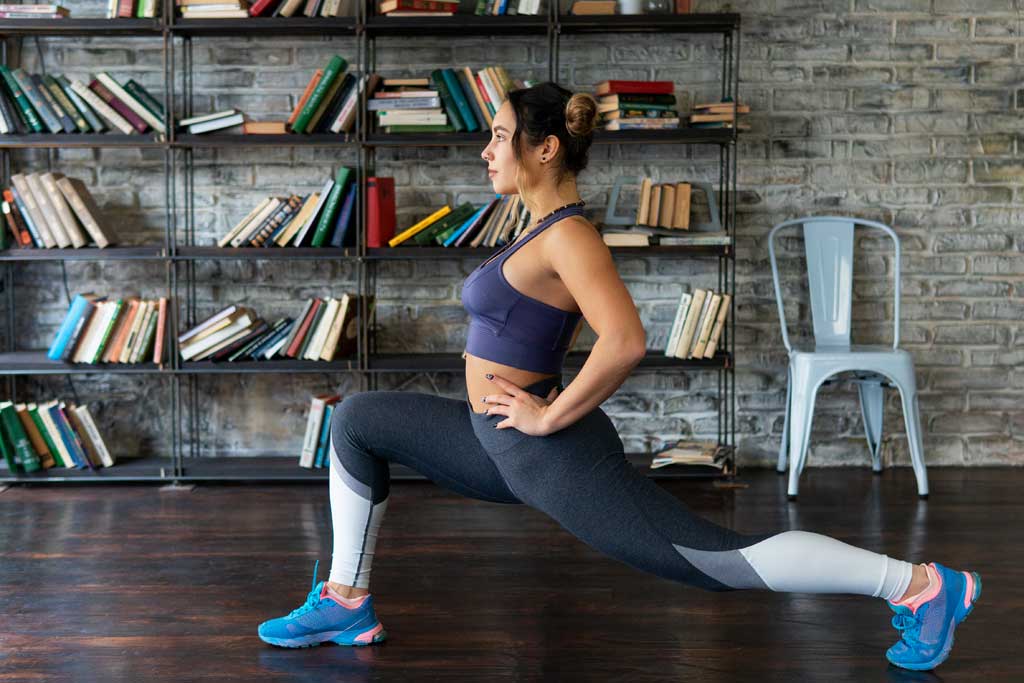
You don’t see it as often, but you can also do HIIT without any rest, and instead add in movement that’s much lower intensity. This gives a period of recovery rather than complete rest.
For instance, you could do 40 seconds of high intensity and 20 seconds of low intensity for 12 rounds. You could do a harder exercise in the 40-second interval, like push-ups or weighted squats, before moving on to a low intensity exercise for the 20-second interval (like planks).
It’s a nice way to keep the body active but still include some high-octane intervals. Plus, the low intensity intervals will be much more challenging if you perform them after similar exercises at a high intensity.
Mixed length HIIT.
There is also the possibility of having different lengths of high intensity intervals each round. The sky’s the limit on this, and the only one I’ve done much with is a 30/60/90 protocol. I got the idea from Hannah Eden’s FYR, which you can get a taste of below. And it’s fantastic.
She does it like this: One round is 10&30, 20&60, 30&90, and you do that three times. I like it a bit harder, and shorten all the rest periods to 10 or 15 seconds. Regardless, it gives you a bit more to play with, as the different lengths of intervals cater to different exercises.
What HIIT structure and ratio should you use?
When designing an HIIT workout for yourself, nothing will help you more than trial and error. Try someone else’s HIIT workouts or make one up and see how it goes.
Here are some of my favorite HIIT structures and ratios, for the entire workout or just parts to put together, a la carte style.
(Rest is listed first unless otherwise noted):
- 10&50×12
- 15&45×20
- 10&20×8 (Tabata), 8 times, with 20 seconds rest between Tabata sets
- 50&50×10 (high intensity/low intensity)
- 50&30×8 (where 50 is high intensity and 30 is low)
- 5&30×16
- 10&40×12
- 30×4 (no rest)(for a nice finisher)
- 12&12×10 (no rest)(for a crazy high intensity interlude or finisher)
What exercises should I do in an HIIT workout?
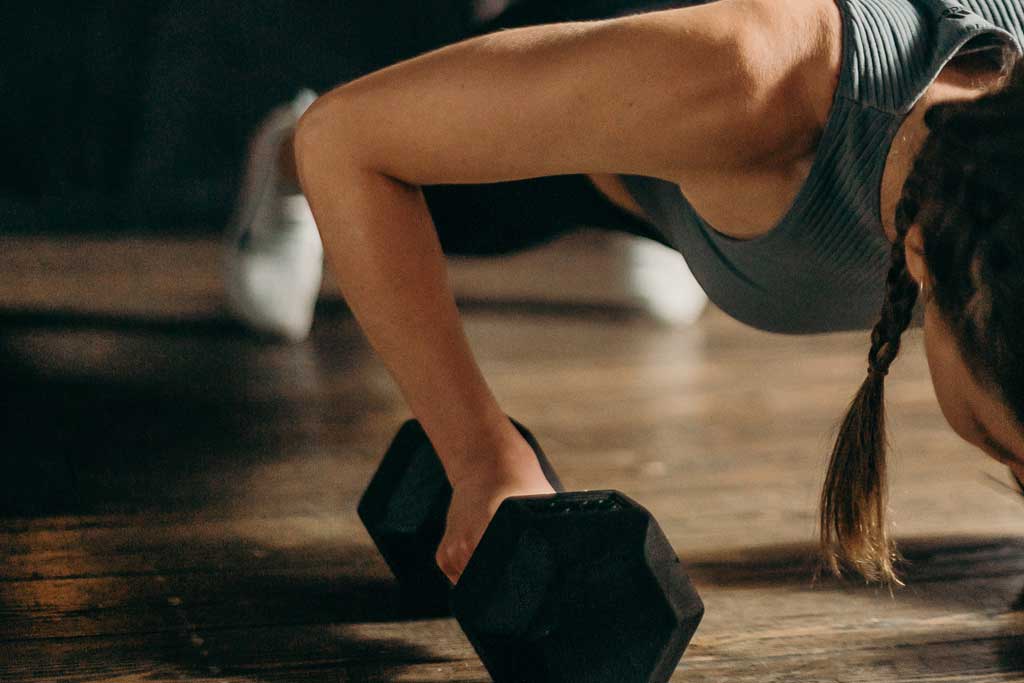
Once you have your structure figured out, then you can fill it in with the exercises you would like to include in your workout.
Unless you have an entire gym at your disposal, use free weights (dumbbells, kettlebells, sandbags, medicine balls, etc.) instead of weight machines.
Should you do strength training or cardio in your HIIT workout?
I’ll be talking about two basic kinds of exercises: those for building strength and those for building cardiovascular health. Either can be weighted or bodyweight.
However, this is a simplification. Most exercises aren’t exclusively “cardio” or “strength training” exercises. Almost every movement is a combination of both, using both aerobic and anaerobic pathways to convert energy. It also depends on how you use the exercises.
But most exercises have one of the two goals in mind. For instance, squats will give you some cardiovascular benefits, but the main goal is to build strength in your legs and glutes. Burpees will build some muscle, but they’re used for cardio more than strength.
What you do during the HIIT intervals depends on your goals and fitness level. However, the best way to maximize the HIIT format is to combine strength training and cardio exercises in one workout.
How to do HIIT with weights: mix cardio and strength training.
The best HIIT workouts have the weighted exercises properly combined and spaced out. While you shouldn’t lift a heavy kettlebell over your head every interval, you don’t want to be jumping every interval, either. Space these exercises out for variety, effectiveness, and safety.
When including strength-building exercises, space those intervals out so that you have enough energy to perform them with proper form. Then, weave some plyometrics and cardio intervals throughout the workout. This will keep your heart rate up and work your muscles from a different angle.
The best way to know what works is to try it yourself. If you don’t feel comfortable creating your own workout, follow someone else’s. If you find one that you really like, use it as a template to build your own before branching out and trying more.
What about all cardio HIIT?
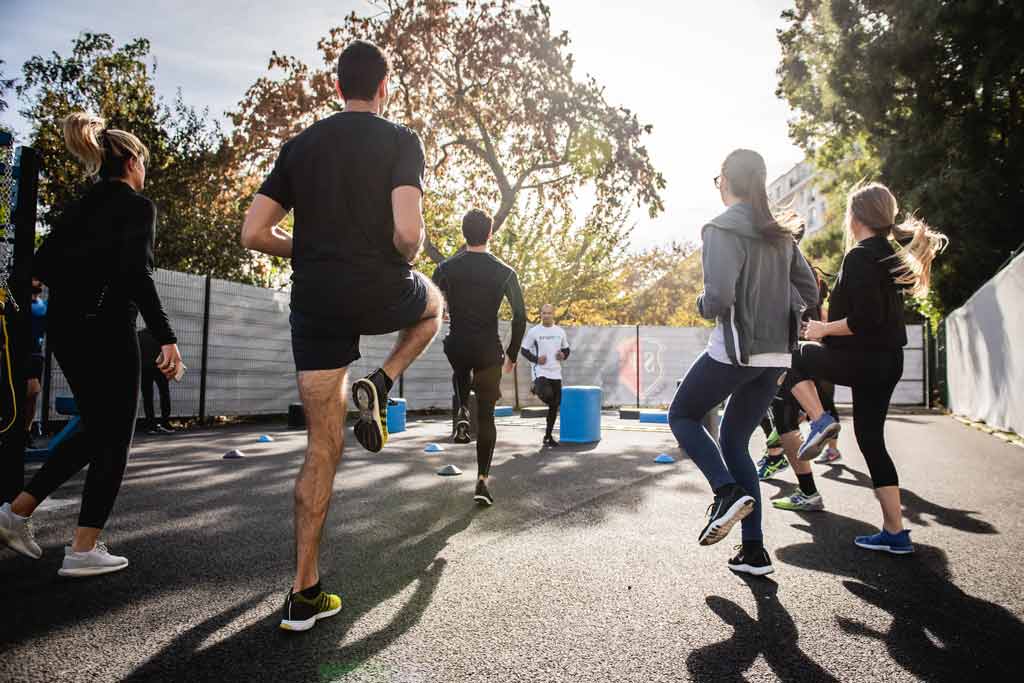
Another good option is to focus exclusively on the cardio benefits and do mostly cardio exercises for your HIIT workout. Stick to bodyweight, full-body workouts, and include plyometrics. Exercises like jumping jacks, burpees, high knees, and jump squats are all ones that I would call “cardio” exercises, though you’ll still get anaerobic benefits from them as well.
You still want a break from plyometrics, though, so throw in an interval that keeps your feet on the ground. Leopard walks, planks, bear crawls or any ab exercises are all good options.
Include bodyweight exercises.
Whatever you do, it’s a good idea to also have some bodyweight thrown in there as well. Bodyweight exercises can be aerobic or anaerobic but usually are both. They work well with HIIT because you won’t risk injury as much, and you don’t have to waste time grabbing equipment.
Don’t focus on strength training with HIIT.
The biggest benefits of HIIT come from its metabolic capacity, not its strength building capacity. If your goal is to build strength or size, don’t use HIIT. It won’t work. Do sets or circuits where you can slow down and focus on form and proper progressive overload. Then use HIIT to vary up your routine, challenge yourself and get some great cardio once or twice a week.
Also, if you only do heavy strength training exercises in an HIIT workout, you risk injuring yourself. The minimal rest and high intensity can create a frantic pace. If you throw weights around trying to keep up, it’s easy to forget proper form.
But, here’s how to do strength training HIIT.
While I don’t recommend doing all strength training, or all heavy lifting, in HIIT form, it’s also not a hard and fast rule.
The key here is to still get as much metabolic benefit as you can from the workout, even when using weights. Use compound exercises (exercises that use more than one joint or muscle group), and do full body workouts.
Spartacus and Spartacus 2.0 from Men’s Health are some wonderful examples of strength training-based workouts that deliver the benefits of a great cardio workout as well.
If you do choose to lift heavy for an HIIT workout, always be sure to never sacrifice form for reps. It won’t help you, and it could certainly hurt you.
Choosing equipment for your HIIT workout.

Part of how to do an HIIT workout is also choosing exercises that don’t require too much setup. With limited rest time, you want to spend that time resting, not running to the weight rack to grab a different weight.
Try to keep it to just a few weights for the entire workout. If you’re at a gym, grab the weights and bring them to your mat so you don’t risk being left without the right weights when that interval comes along. If you’re lucky to have enough weights at home, just prepare ahead of time so you know what to grab. If you’re using something like resistance bands, try to group those exercises together so you’re not taking them on or off during every rest.
And if you have very limited weights, choose exercises that can use that weight. For instance, if you only have two 20lbs dumbbells, but you can’t do curls with 20s, don’t do curls. Do overhead presses, rows, or something else. Or if you only have two 10lbs dumbbells but 20lbs isn’t enough for squats, add a jump into the squat for some added challenge.
Regardless, you want to be hitting your limit towards the end of the high intensity work interval. If it’s not perfect, that’s okay! Adjust during the workout, or take notes and try the workout with improvements next time.
How to perform an HIIT workout correctly.
Okay, so you have your workout planned out. What about doing the HIIT workout?
When it’s a rest interval, rest as much as possible. If you need to grab a weight or get situated, do that at the end of the rest interval so you’re ready to go at the beginning of the high intensity interval.
When the high intensity interval starts, do your exercises or reps in good form as consistently as you can. If it’s an exercise that benefits from speed, do it as fast as you can. But if weight is involved, don’t go too fast. Faster isn’t always best, for strength gains or safety.
If you reach failure before the end of the work interval, take a brief pause. Then continue until the end of the interval. However, know the difference between “I’d like to take a break” and “I need to take a break.” Go as long as you can without breaking. This is high intensity, after all.
And yeah, being exhausted from those burpees will mean that you might not be able to pound out as many lunges as you would like. Remember, the benefits are primarily metabolic, with strength being secondary. You’ll burn fat and get a great workout, plus build some lean muscle. But you don’t do HIIT to gain large muscles.
What if you feel sick?
If you feel anything other than normal tiredness, stop or take a pause. Do not continue if you feel sick, lightheaded, or out of control.
If you do, it might be a momentary thing, or you may have made a workout that’s too advanced for your level. If so, consider playing with the HIIT interval ratio. Making the rest longer will usually help. It should be difficult and outside of your comfort zone, but not so hard that your body can’t keep up at all.
Your fitness gains are yours alone.
If a workout is too hard, take a step back. You’ll get better and the workout will get easier. Remember—this is a process and a practice. The only comparison that matters is to yourself. While certain things might set you back (illness, menstrual cycles, stress), you will advance your fitness level swiftly with HIIT. Don’t push yourself to limits you aren’t ready for yet. You’ll get there eventually.
How often should you do HIIT?
HIIT is one of my favorite forms of working out, but it is taxing on the body, especially the nervous system. For this reason, you shouldn’t do HIIT for an entire workout every day.
Aim for no more than three full HIIT workouts per week. If you want to do more, try shifting the structure of the workout so it’s not HIIT but the same basic order. For instance, do the workout as a circuit, with a certain amount of reps and rounds beforehand.
You could also do an AMRAP (As Many Rounds As Possible) so that you set a timer for a specific time and then run through the reps until the timer runs out. This way, you know you’ll be done at a certain time, but you won’t be as frantic during the workout.
You could also do one of the above formats and then squeeze in shorter HIITs for finishers or interludes.
If you also like traditional strength training or cardio, then insert one or two HIIT workouts per week to challenge yourself.
Where to perform HIIT workouts.

HIIT workouts at home.
HIIT is a perfect format for home workouts. Many of us work out at home because of children, lack of equipment, lack of time, lack of a gym, or any number of reasons.
HIIT is efficient, which makes it a perfect solution for those looking to minimize workout time. The downside is that you need to work extremely hard during the workout, but then it’s over fairly quickly, and you can get back to your day.
It’s also conducive to bodyweight workouts. You can breeze through exercises more safely without worrying about loading heavy weights.
HIIT workouts outside.
If you have some great bodyweight workouts, or you don’t mind carting around a heavy weight or two, HIIT workouts are wonderful outside. Step out on your patio or yard, or head to a nearby park. If you’re doing any floor work, bring gloves or a mat if you don’t want to get too dirty. However, getting dirty can be part of the fun!
And if the weather is nice, it’s a wonderful way to enjoy the fresh air and get some exercise.
Can you do HIIT at the gym?
HIIT workouts are completely doable in a gym. I recommend finding a spot, putting a mat down, gathering weights, and staying put for the duration of the workout. Because it’s so fast, you don’t want to get up and change weights during a short rest period. Usually, HIIT workouts are short, so you won’t be inconveniencing others much, if at all.
In conclusion, HIIT is a workout format everyone can make use of.
HIIT is an excellent addition to your fitness routine. Now that you know how to do HIIT workouts and put them together yourself, try around and see what works best for you.
Whether you want to use this format almost every workout, or just every now and then, it will help you burn fat fast, beat depression, prevent disease, and give you a great challenge.
Related HIIT posts:
- What Is HIIT and Why You Should Be Doing It
- Why You Should Be Mixing Cardio and Weight Training (and How to Do It)
- Home Gym Equipment Ideas That Fit Your Wallet and Home

